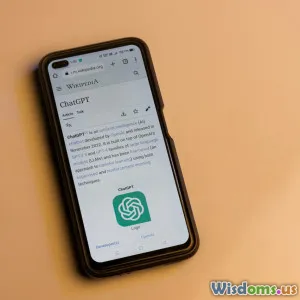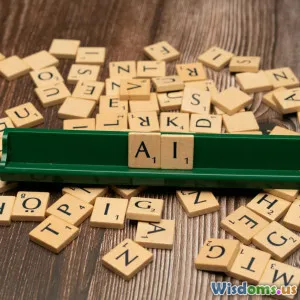
Innovative Approaches to Language Learning
8 min read Explore innovative, research-backed methods revolutionizing language learning for faster, deeper fluency. (0 Reviews)
Innovative Approaches to Language Learning
Introduction: The Dawn of a New Era in Language Acquisition
Language learning has long been a formidable challenge for learners worldwide. Traditional classroom methods, often rigid and grammar-heavy, struggle to ignite passion or yield real-world fluency. Yet today, a renaissance driven by technology, cognitive science, and innovative pedagogy is transforming how people learn new tongues. Imagine being able to hold spontaneous conversations in a foreign language, thanks to AI-powered tutors or simulated immersive experiences in virtual reality. This article unpacks cutting-edge approaches that not only accelerate language acquisition but also enhance retention and cultural connection.
Embracing AI-Driven Personalized Learning
Customized Learning Paths Tailored by Artificial Intelligence
Artificial intelligence (AI) is reshaping language education by delivering personalized learning journeys that adapt to each user’s pace, level, and goals. Platforms like Duolingo and Babbel now use machine learning algorithms that analyze learner mistakes, strengths, and habits to fine-tune exercises. This customization leads to more effective practice and less frustration.
For example, Duolingo employs spaced repetition systems combined with AI feedback to ensure words and grammar are revisited just as the learner is about to forget them. According to a study by the City University of New York in 2016, participants who used AI-adaptive systems scored 0.7 points higher on proficiency tests compared to traditional learners.
Chatbots and AI Tutors for Real-Time Interaction
The advent of AI-powered chatbots, such as those in apps like Mondly or Lingvist, allows learners to practice conversational skills in a low-pressure environment anytime, anywhere. These intelligent tutors provide instant feedback, correct pronunciation, and simulate real-life dialogues, which are crucial for building speaking confidence.
AI tutors can also simulate multicultural conversational nuances, helping users navigate language contextually, from slang to politeness levels, impossible to tackle through standard textbooks.
Immersive Virtual Reality (VR) and Augmented Reality (AR) Experiences
Fully-Immersive Language Environments
VR enables learners to enter simulated countries where the target language is spoken, turning abstract phrases into concrete, contextualized experiences. For instance, a learner putting on a VR headset might find themselves in a bustling Spanish marketplace, negotiating prices or asking for directions, which fosters deeper engagement and real-life application.
Studies by the Virtual Reality Society highlight that VR learners enhance vocabulary retention by up to 15% over conventional methods due to sensory immersion and contextual learning.
Augmented Reality for On-the-Go Learning
AR apps like Google Translate’s augmented camera features or Mondly AR overlay translations onto real-world objects, making vocabulary learning practical and instantaneous. This augmentation bridges language gaps during travel or in everyday life, encouraging spontaneous, authentic usage rather than rote memorization.
Halo Effect of Gamification in Language Learning
Motivation through Game Design Elements
Integrating gamification mechanics—points, badges, leaderboards—injects enthusiasm and a sense of achievement. Platforms employing game theory keep learners returning by tapping into psychological motivators like competition and mastery.
Research from the Journal of Educational Psychology confirms gamified language lessons increase learner retention rates by approximately 34% and improve motivation across age groups.
Real-World Example: FluentU’s Video-Based Gaming
FluentU utilizes real-world videos combined with interactive quizzes transforming passive watching into active language acquisition. This method caters especially well to auditory and visual learners, contextualizing language functions such as idioms and cultural expressions.
Neuroscience-Based Techniques: Learning Optimized by Brain Science
Spaced Repetition and Memory Consolidation
Rooted in the spacing effect, techniques that schedule reviews of vocabulary exactly before forgetting are showing tremendous efficacy. Apps like Anki utilize neuroscience-backed algorithms, allowing learners to maximize study efficiency and long-term retention.
Multi-Sensory Learning Pathways
Engaging multiple senses strengthens neural pathways involved in language. Techniques combining listening, speaking, reading, and writing enhance plasticity. Research from MIT demonstrated that multi-modal language training improved fluency acquisition rates by 25% compared to single-modality methods.
The Role of Emotional Engagement
Language acquisition is profoundly tied to emotion. Incorporating storytelling, music, or culturally relevant content engages the amygdala, improving retention and motivation. For instance, using songs in language classrooms or apps (e.g., LyricsTraining) amplifies learning through emotional resonance.
Social Learning and Cultural Immersion: Beyond Vocabulary and Grammar
Language Exchange Platforms
Websites like Meetup, Tandem, or ConversationExchange connect learners with native speakers globally for mutual language practice, fostering authentic communication and cultural exchange.
Experiential Learning Through Travel and Community
Nothing beats real-world immersion. Programs like the Peace Corps or language immersion schools place learners in culturally-rich environments. According to a 2018 report from the British Council, immersive experiences enhance real-world speaking skills by up to 80% compared to classroom-only learners.
Digital Communities and Online Forums
Social media groups, forums like Reddit’s r/languagelearning, and Discord channels create supportive networks where learners share tips, resources, and encouragement—boosting resilience and sustained engagement.
Conclusion: The Future is Adaptive, Immersive, and Empowering
Language learning is no longer confined to dusty textbooks and passive listening drills. By embracing AI personalization, immersive technologies, gamification, brain-based techniques, and culturally rich social interactions, learners access vibrant, effective pathways to fluency. These innovative approaches are not only changing how languages are acquired but also making the journey more enjoyable and tailored to individual needs. For anyone committed to mastering a new language, the future holds an exciting array of tools that blend science and technology with human creativity and cultural connection. The only step left is to dive in—your multilingual self awaits.
Sources:
- City University of New York, 2016, Study on AI Language Learning
- Virtual Reality Society, VR in Education Report, 2021
- Journal of Educational Psychology, 2019, Gamification Impact
- MIT Neuroscience Department, 2020, Multi-Sensory Language Learning Research
- British Council, 2018, Language Immersion Outcomes
Rate the Post
User Reviews
Popular Posts





















